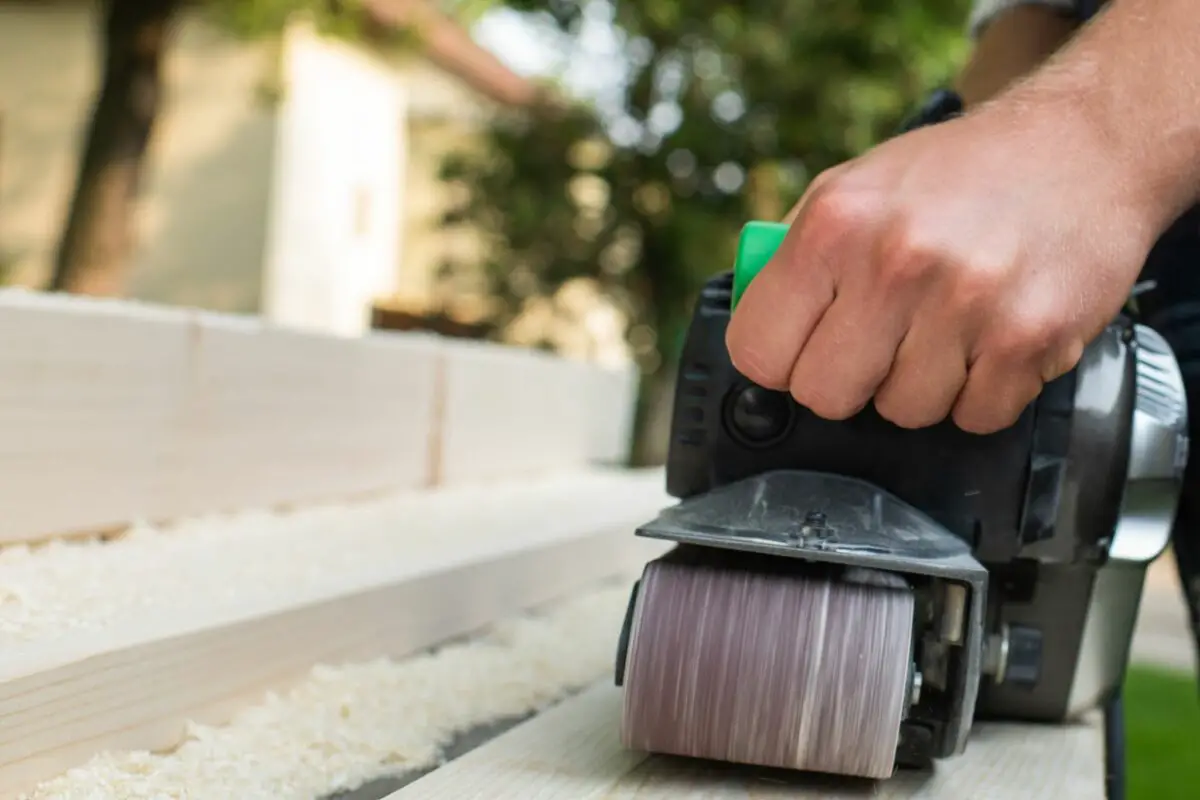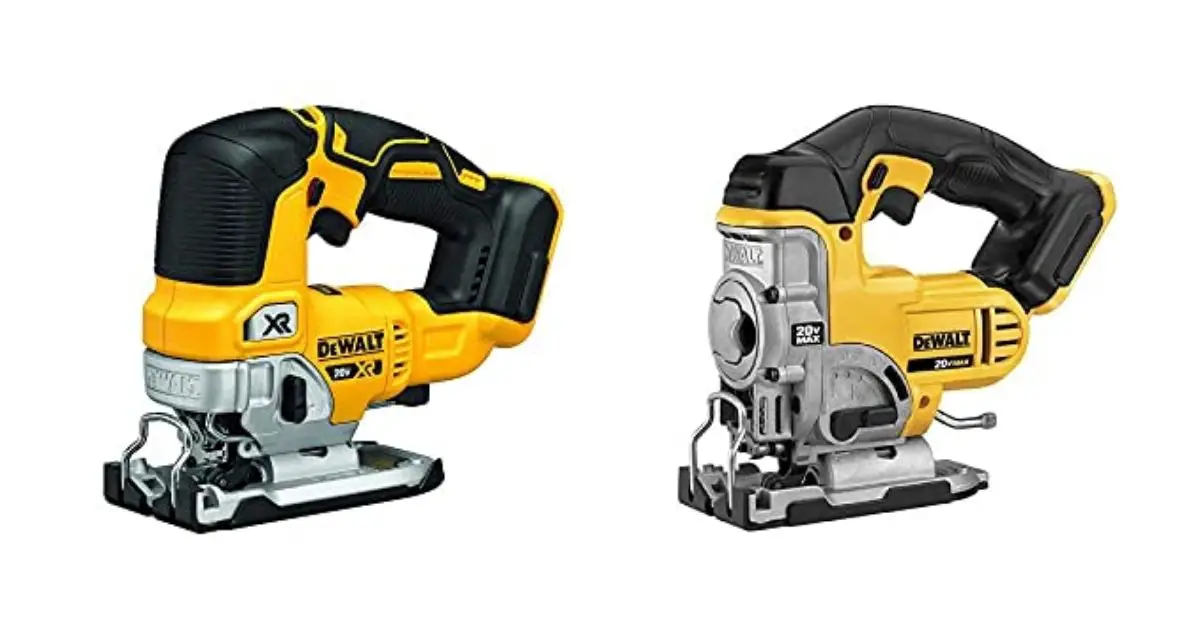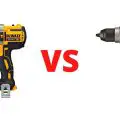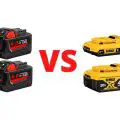Power Tools
Best Belt Sander for Table Tops
Belt sanders are widely used to detail, measure, and cut wood and metal surfaces. These sanding machines prove very useful to professionals and hobbyists alike.
You’re probably interested in taking on some crafting, jewelry making, and detailing if you’re here looking for the best belt sander for tabletops. Rest assured; you’ll find what you need if you read this article to the end.
First, let’s answer the most important question: how do you pick out the right benchtop belt sander?
Buying Guide for Benchtop Belt Sanders
When buying an abrasive belt unit, you must ensure that it’s capable of the task you want it to perform. There are different types of sanders out there; finding the right one can feel much harder if you don’t know what to look for.
Here is a basic buying guide to help you out.
Focus on the type of sander you want
Not all sanders are equal. Some come with discs, and others with belts. Some are stationary, while others are handheld. So, the first thing you should do is decide what type of sander you want.
The functions of most belt sanders overlap, but that doesn’t mean that they perform equally. For example, some belt tables are not designed to tilt, which means sanding at an angle can be problematic.
You may also find that a sanding table needs to be bigger to hold a miter gauge, and we all know how important those are for ensuring clean cuts when using power tools.
A vertical belt sander for tabletops should do the trick if you are sanding many small items. However, if you need to detail large projects like dressers and cabinets, you’ll find it easier to accomplish with a flexible tool.
In that case, a handheld sander would be the best choice.
Stationary vs. handheld sanders
Stationary sanders tend to be powerful and capable of handling all types of jobs. Does that mean you should stop here and immediately spring for one? I wouldn’t recommend it unless you’re certain you can finish all your projects on a horizontal benchtop sander.
You’ll need more portability than power for anything else, including vertical and angle sanding or working from a sanding table. Portable sanders are great for all types of jobs. They’re my go-to whenever I have a task that demands mobility and total control.
Consider buying a handled belt sander if you’re planning to do anything intricate with your detailing and designs. It gives you the control and mobility you need to achieve difficult designs.
Choosing the right grit and why it matters
New buyers can easily lose themselves in the specifications of the sander, but you need to remember one of the most important attributes: the amount of grit.
A belt sander must maintain belt tension throughout the project to smooth out imperfections on different types of wood. Most importantly, it needs a belt with enough grit for the task.
Different belts have different levels of grit, and the smoother the grit, the finer the finish you can achieve.
The importance of build quality
When researching belt sanders, stick to cast-iron bodies whenever possible. They’re indeed heavier than sanders built from materials like aluminum, but there’s a reason why they’re “better” for heavy-duty projects.
Cast-iron sanders take longer to heat up. They have a much longer runtime than their aluminum counterparts, which need frequent breaks to prevent overheating.
Splurging on a more expensive cast-iron belt sander rewards you with longer operational times, which means you can get much more done before the tool overheats.
Health and Safety
Don’t forget about your well-being when buying a belt sander. You should ensure that it has adequate safety features to prevent accidents and injury. Moreover, a good sander will help you protect your eyes and lungs from wood dust.
Of course, you should never use power tools without the proper protective gear. Goggles, gloves, and proper ventilation are necessary during the operation of a belt sander.
However, getting a belt sander with a built-in dust port can minimize health risks, especially if you have asthma. Dust ports are extremely beneficial because they prevent wood dust from lingering in the atmosphere and getting into your lungs. It’s a small feature, but it’s tremendously useful.
The Best Belt Sanders for Tabletops – The Best Picks in 2022
Rockwell Belt/Disc Combo Sander
How convenient is it to have a vertical and horizontal sanding machine?
This Rockwell sander facilitates both types of sanding and equips you with a disc sander as well. I love how easy it is to raise and lower its 4-inch by 36-inch belt platform between 0 and 90 degrees to suit different projects.
The corded sander runs on a 4.3-amp motor, providing enough power for all types of wood sanding projects. It is amazingly good at making bevel cuts, too – simply adjust the sanding table (it bevels from 0 – 45 degrees) to get the angle for the cut. I have smoothed out many picture frames successfully with this useful feature.
It’s also surprisingly easy to use this sander. Belt changes are quick and easy, so swapping out sandpapers of different grits feels effortless during projects. You also get a hex key and a miter gauge in addition to the sanding belt and disc.
A safety switch is included to prevent accidental startups. I sleep much better knowing it’s there.
Jellas 7-amp Sander (3” x 21”)
Need more power for your sanding jobs? There’s plenty of it in this 7-amp, 3-inch by the 21-inch belt sander. Not only do you get mountains of power, but also more flexibility in terms of how you can use your sander, thanks to variable speed controls.
This corded sander is capable of up to 400 RPM, but you can select any speed between 120 – 400 RPM to match the application. I find that handy when working with woods of different hardness.
If you’re a first-time buyer, you’ll get a lot of value out of this option because it comes with ten pieces of sanding belts of different grits – from 40-grit to 120-grit aluminum oxide sanding belts.
Not only do you get much more than you pay for, but you also get very useful features. The dust-collecting bag works much better than a dust box (in my opinion) and is easy to detach for cleaning.
Jellas offers up to two years of free customer support, so you can always call them if you encounter problems with your unit.
Why You Should Trust Us
At Woodworking Tool Guide, we know one size doesn't fit all! We cater to every woodworker, from beginner to pro, with insights and recommendations tailored to your skill level, project needs, and budget. We take the guesswork out of choosing the right tools, whether you're tackling your first crafting a masterpiece for the ages. So grab your chisel, join our community, and let's build something amazing together!
Woodworking Tool Guide wasn't just born, it sprouted from a seed of passion for the craft. What started as a joyful exploration blossomed into a trusted online haven for fellow enthusiasts like you. We pour our love into meticulously chosen review selections, meticulous hands-on testing, and lab-backed insights, all to empower you with reliable, comprehensive information you can build on. So, grab your tools, trust our guidance, and let's build something beautiful together!
Passion-Driven Expertise
Our journey started with a shared love for woodworking. The team behind the Woodworking Tool Guide is comprised of individuals who are not just writers but passionate woodworkers themselves. This shared enthusiasm ensures that our content is crafted with a deep understanding of the craft and an authentic appreciation for quality tools.
Top Tool Guides Online
Woodworking Tool Guide has rapidly ascended to become one of the premier online destinations for tool guidance. Our commitment to excellence and the accuracy of our information has positioned us as a reliable source for both beginners and seasoned woodworkers seeking trustworthy advice on the best tools for their projects.
User-Centric Approach
Our content caters to every woodworker, from rookies just starting out to seasoned pros tackling intricate projects. We tailor our insights and recommendations to your skill level, project needs, and budget, ensuring you find the perfect tools to match your unique woodworking journey. So step into your workshop, grab your tool belt, and let Woodworking Tool Guide be your trusted companion as you craft your masterpieces.
Continuous Support and Innovation
Woodworking is an ever-evolving craft, and so is our commitment to supporting you. We are dedicated to bringing you the latest information on woodworking tools, techniques, and trends. Our team is actively working to expand our content and bring you more valuable insights, ensuring that you stay well-informed in your woodworking adventure.
Hands-On Experience
Ditch the endless research rabbit hole! At Woodworking Tool Guide, we believe in actionable advice, not armchair analysis. We get our hands dirty, putting every tool through its paces in real-world woodworking scenarios. Whether it's the precision of a table saw, the versatility of a router, or the tactile satisfaction of a handplane, we test for performance, durability, and user-friendliness. No more sifting through dry specs – we deliver practical insights you can trust to transform your woodworking dreams into reality.
Woodworking Tool Guide isn't just a review site, it's your trusted companion on the sawdust-filled path to woodworking mastery. Our expert team, led by veteran David Jones, meticulously tests and explains tools in terms you understand. We cut through the jargon, bias, and confusion with real-world insights and honest evaluations. Join our passionate community, where decades of experience, cutting-edge knowledge, and shared love for the craft come together to guide you every step of the way. So grab your chisel, buckle up, and let's embark on this exciting woodworking adventure, together!







